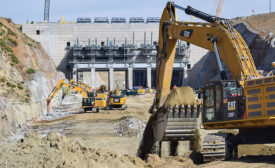ARTICLES
Low & Slow: Folsom Dam's Watershed Agreement
Two federal agencies formed a first-ever $900-million partnership to upgrade Folsom Dam and protect Sacramento from potential floods
Read More
The latest news and information
#1 Source for Construction News, Data, Rankings, Analysis, and Commentary
JOIN ENR UNLIMITEDCopyright ©2024. All Rights Reserved BNP Media.
Design, CMS, Hosting & Web Development :: ePublishing


